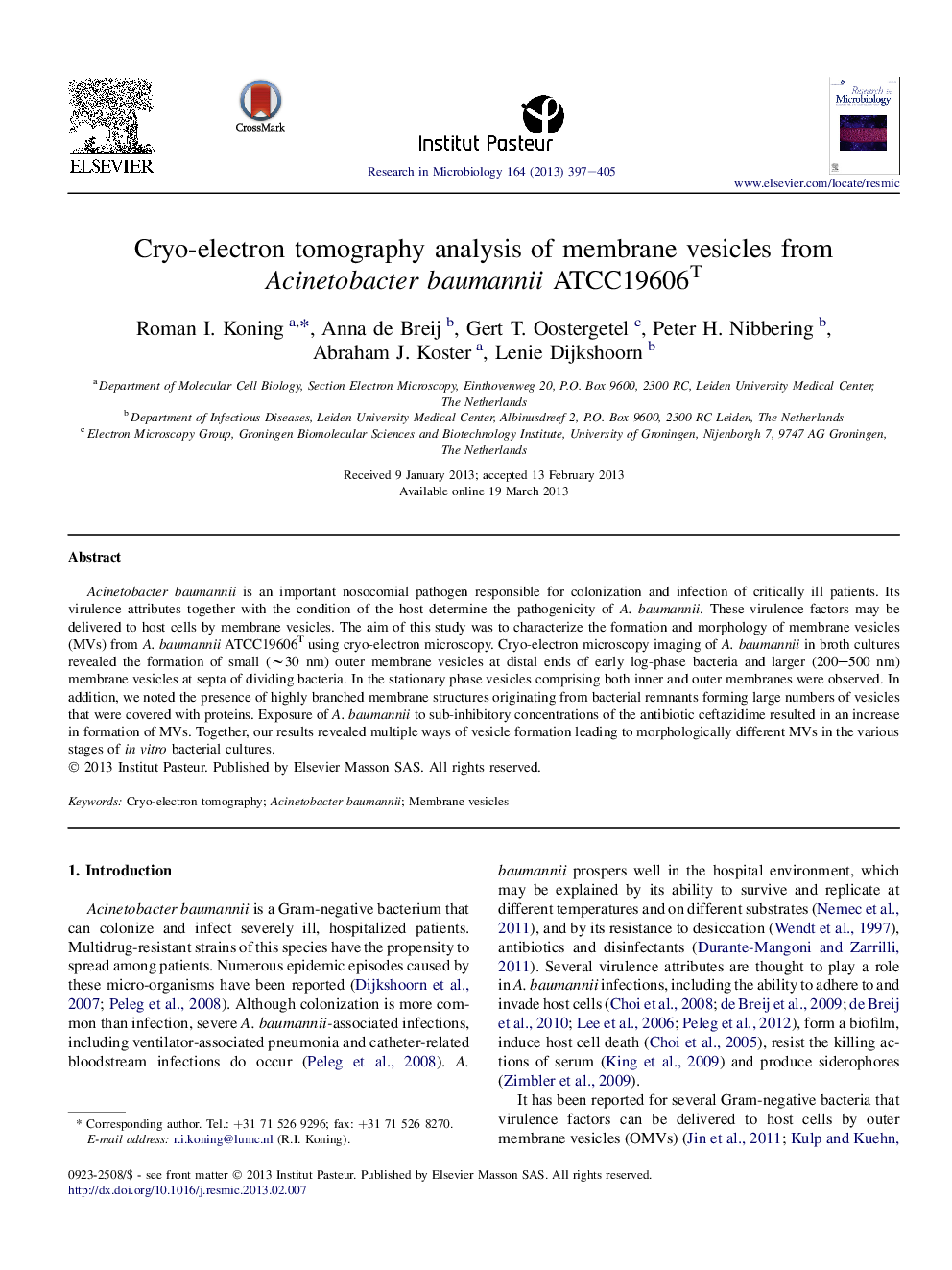| Article ID | Journal | Published Year | Pages | File Type |
|---|---|---|---|---|
| 4358727 | Research in Microbiology | 2013 | 9 Pages |
Acinetobacter baumannii is an important nosocomial pathogen responsible for colonization and infection of critically ill patients. Its virulence attributes together with the condition of the host determine the pathogenicity of A. baumannii. These virulence factors may be delivered to host cells by membrane vesicles. The aim of this study was to characterize the formation and morphology of membrane vesicles (MVs) from A. baumannii ATCC19606T using cryo-electron microscopy. Cryo-electron microscopy imaging of A. baumannii in broth cultures revealed the formation of small (∼30 nm) outer membrane vesicles at distal ends of early log-phase bacteria and larger (200–500 nm) membrane vesicles at septa of dividing bacteria. In the stationary phase vesicles comprising both inner and outer membranes were observed. In addition, we noted the presence of highly branched membrane structures originating from bacterial remnants forming large numbers of vesicles that were covered with proteins. Exposure of A. baumannii to sub-inhibitory concentrations of the antibiotic ceftazidime resulted in an increase in formation of MVs. Together, our results revealed multiple ways of vesicle formation leading to morphologically different MVs in the various stages of in vitro bacterial cultures.
